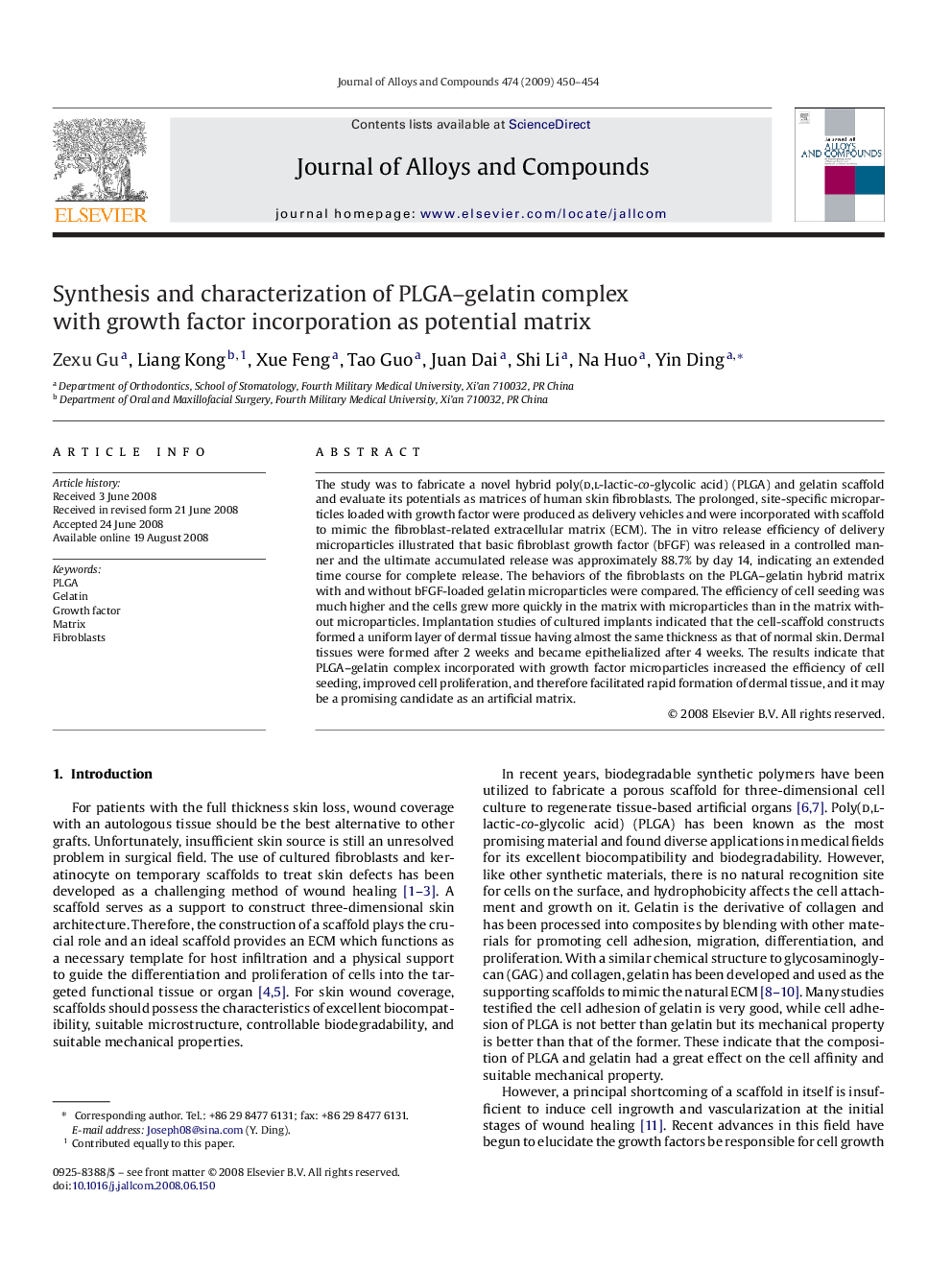| Article ID | Journal | Published Year | Pages | File Type |
|---|---|---|---|---|
| 1622897 | Journal of Alloys and Compounds | 2009 | 5 Pages |
The study was to fabricate a novel hybrid poly(d,l-lactic-co-glycolic acid) (PLGA) and gelatin scaffold and evaluate its potentials as matrices of human skin fibroblasts. The prolonged, site-specific microparticles loaded with growth factor were produced as delivery vehicles and were incorporated with scaffold to mimic the fibroblast-related extracellular matrix (ECM). The in vitro release efficiency of delivery microparticles illustrated that basic fibroblast growth factor (bFGF) was released in a controlled manner and the ultimate accumulated release was approximately 88.7% by day 14, indicating an extended time course for complete release. The behaviors of the fibroblasts on the PLGA–gelatin hybrid matrix with and without bFGF-loaded gelatin microparticles were compared. The efficiency of cell seeding was much higher and the cells grew more quickly in the matrix with microparticles than in the matrix without microparticles. Implantation studies of cultured implants indicated that the cell-scaffold constructs formed a uniform layer of dermal tissue having almost the same thickness as that of normal skin. Dermal tissues were formed after 2 weeks and became epithelialized after 4 weeks. The results indicate that PLGA–gelatin complex incorporated with growth factor microparticles increased the efficiency of cell seeding, improved cell proliferation, and therefore facilitated rapid formation of dermal tissue, and it may be a promising candidate as an artificial matrix.
